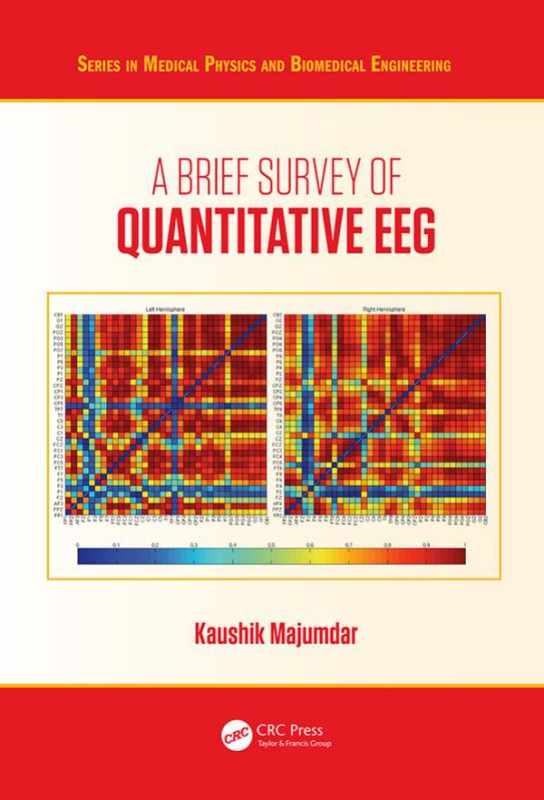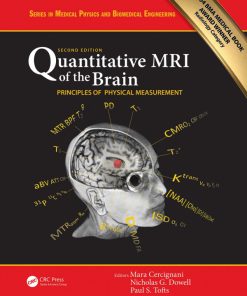(Ebook PDF) A Brief Survey of Quantitative EEG 1st edition by Kaushik Majumdar 1351643517 9781351643511 full chapters
$50.00 Original price was: $50.00.$25.00Current price is: $25.00.
Authors:Kaushik Majumdar , Series:Biomedical [76] , Author sort:Majumdar, Kaushik , Languages:Languages:eng , Published:Published:Sep 2017 , Publisher:CRC Press
A Brief Survey of Quantitative EEG 1st edition by Kaushik Majumdar – Ebook PDF Instant Download/DeliveryISBN: 1351643517, 9781351643511
Full download A Brief Survey of Quantitative EEG 1st edition after payment.

Product details:
ISBN-10 : 1351643517
ISBN-13 : 9781351643511
Author : Kaushik Majumdar
This book covers various quantitative methods for preprocessing and analyzing human EEG signals. It presents a holistic approach to quantitative EEG from its neurological basis to simultaneous EEG and fMRI studies. Equal emphasis is given to major mathematical and statistical theories and computational techniques that have been in use in qEEG and their applications on clinical and laboratory experimental EEG. The book is compact and self-contained, requiring no background in EEG processing or acquisition and quantitative techniques.
A Brief Survey of Quantitative EEG 1st Table of contents:
1. Neurophysiology of the Human Scalp EEG
1.1 Neural Basis of EEG
1.1.1 Dipole Source Model
1.1.2 Distributed Source Model
1.2 Tissue Impedance
1.3 Artifacts
1.3.1 Physiologic Artifacts
1.3.2 Extraphysiologic Artifacts
1.4 Electrode Placement Systems
1.4.1 10–20 System
1.4.2 10–10 System
1.5 Noise
1.6 Data Representation
1.7 Frequency Bands
1.7.1 Delta
1.7.2 Theta
1.7.2.1 Alpha
1.7.2.2 Mu
1.7.3 Beta
1.7.4 Gamma
References
2. Preprocessing
2.1 Filtering
2.1.1 Impulse Response Filter
2.1.2 Butterworth Low-Pass Filter
2.1.3 Gaussian Low-Pass Filter
2.1.4 Band-Pass Filter
2.2 Decomposition Techniques
2.2.1 Principal Component Analysis
2.2.2 Independent Component Analysis
2.2.3 Gist of PCA and ICA Comparison
References
3. Source Localization
3.1 Forward Problem
3.1.1 Boundary Element Method
3.1.1.1 Dipole Source Model
3.1.1.2 Distributed Source Model
3.1.2 Finite Element Method
3.1.3 Finite Difference Method
3.1.3.1 iFDM
3.1.3.2 aFDM
3.1.4 Comparison among Methods
3.2 Inverse Problem
3.2.1 Weighted Minimum Norm Inverse
3.2.2 MUSIC
3.2.3 R-MUSIC
3.2.4 sLORETA
References
4. Event-Related Potential
4.1 Plotting ERP Data
4.2 Measuring ERP Amplitudes
4.2.1 Peak Amplitude
4.2.2 Mean Amplitude
4.3 Measuring ERP Latencies
4.3.1 Peak Latency
4.3.2 Fractional Area Latency
4.4 Analyses of ERP
4.4.1 ANOVA in ERP
4.4.2 MANOVA in ERP
References
5. Binding Problem
5.1 Synchronization
5.1.1 Phase Synchronization
5.1.1.1 Hilbert Transformation Based
5.1.1.2 Wavelet Transformation Based
5.1.1.3 Fourier Transformation Based
5.1.2 Other Synchronizations
5.1.3 Multivariate Analysis
References
6. Epilepsy Research
6.1 Automatic Seizure Detection
6.1.1 Template-Based Seizure Detection
6.1.1.1 Feature Extraction
6.1.1.2 Representation of Seizure Onset Patterns
6.1.1.3 Distance Measure
6.1.1.4 Onset Detection
6.1.2 Transformation-Based Detection
6.1.3 Operator-Based Detection
6.1.3.1 False-Detection Avoidance
6.2 Lateralization
6.3 Interictal EEG
6.4 Seizure Prediction
6.5 ROC Curve Analysis
References
7. Brain–Computer Interface
7.1 Preprocessing and Signal Enhancement
7.2 Frequency Domain Features
7.3 Time Domain Features
7.4 Signal Analysis
7.5 Translation Algorithms
7.5.1 Fisher’s Linear Discriminant
7.5.2 Logistic Regression
7.5.3 Support Vector Machine
7.5.4 Neural Network
7.5.5 k-Means Clustering
References
8. An Overview of fMRI
8.1 Magnetic Resonance Imaging
8.1.1 T1-Weighted Imaging
8.1.2 T2-Weighted Imaging
8.1.3 Spatial Localization
8.2 Imaging Functional Activity
8.3 The BOLD Effect
8.4 Interpreting the BOLD Response
References
9. Simultaneous EEG and fMRI
9.1 Artifacts
9.1.1 fMRI Gradient Artifact
9.1.2 Cardioballistogram and Blood Flow Effect
9.2 Recording Principles
9.2.1 EEG Wire
9.2.2 Movement
9.3 Interpretation
9.3.1 Converging Evidence
9.3.2 Direct Data Fusion
9.3.3 Computational Neural Modeling
People also search for A Brief Survey of Quantitative EEG 1st:
quantitative eeg analysis
quantitative eeg and neurofeedback
quantitative eeg
quantitative eeg analysis methods and clinical applications
quantitative eeg brain mapping












